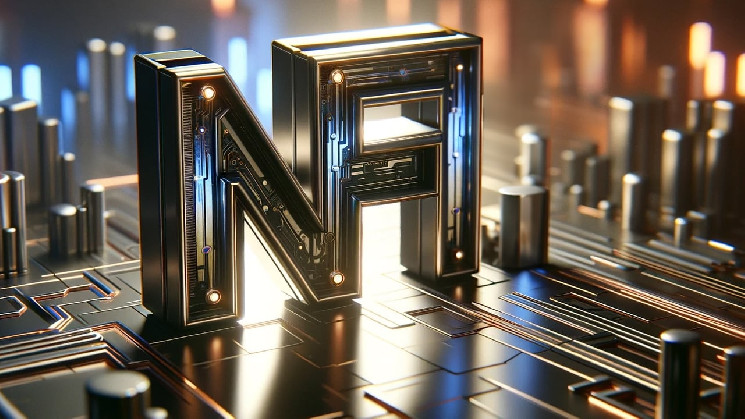Many have already pronounced the death of NFTs, and in part, they are correct. Amidst the fervor of the NFT hype cycle, we saw huge valuations and sales such as Beeple’s ‘The 5000 Days’ collection selling for a staggering $69.3 million. However, not substantiated by anything beyond the hype, the market came crashing down with the number of active wallets that either purchased or sold an NFT between 2021 to 2023 decreasing by 88%.
The following is an opinion editorial written by Tyler Adams, Chief Executive Officer & Co-Founder of COZ, a Web3 software development community pioneering blockchain applications.
The detachment of NFTs from real-world utility impacted overall sales, as these digital collectibles lack tangible purpose beyond their digital form. They redefine asset ownership by shifting it entirely to the digital sphere, altering the post-purchase connection and at its high-point leading to soaring prices for basic JPEG images, primarily driven by speculation.
Furthermore, this disconnect between utility and value undermined the ability of those in the industry to establish trust among the wider population, with the subsequent market crash reinforcing what quickly became a natural distrust of the NFT community. Meanwhile, in the realm of blockchain, security challenges related to smart contract development represent additional barriers to widespread adoption. This all culminates to raise a critical question: ‘Beyond speculation, what actual value do these digital assets possess?’
Moving Beyond the JPEG With NFIs
Rather than being doomed to fade into oblivion, NFTs can instead be seen as a crucial stepping stone, setting in motion a new wave of technological innovation – Non-Fungible Items (NFIs). This emerging technology represents a real-life, tangible asset cryptographically connected to a digital twin, forming a secure link between the physical and digital domains. NFIs serve as a gateway for widespread Web3 adoption, empowering people to demonstrate ownership of a physical object, and simultaneously authorize particular actions either on-chain or off-chain.
In contrast to NFTs traded on a blockchain, NFI technology advances things by leveraging sophisticated cryptography for verification, embedding an inaccessible secret key into physical items so that individual NFIs can generate unique “proofs” specific to only them. This ensures verifiable ownership of items, safeguarding their legitimacy, and enabling creators to receive royalties from online trades of their work.
The application of this technological enhancement of ownership creates the endless potential for real-world use cases and industries, including brand and post-purchase activations, customer experiences (unique access to events or clubs), proof of physical ownership, and streamlined verifications.
NFIs – NFTs With Real World Use Cases
As an example of what is possible through NFI technology, let’s take a look at luxury goods. As the luxury fashion industry anticipates a significant expansion in the resale market, with a projected compound annual growth rate (CAGR) of 9.6% and an estimated market size reaching 52 billion US dollars by 2026, brands find themselves increasingly affected by the widespread circulation of counterfeit or infringing goods. This underscores the current and pressing challenges posed by unauthorized sales.
NFIs are revolutionizing this sector by integrating blockchain technology to build a strong system for confirming ownership and authenticity and presenting a promising ally for luxury identification.
High-end brands are beginning to pay attention. Dior has played a pivotal role in integrating NFI technology with the debut of Web3 sneakers. A physical chip embedded within the shoes allows users to retrieve an authentication certificate, which is stored on a blockchain proving its authenticity and enabling ownership verification. This technology has provided Dior with a unique USP: offering limited-edition, digitally scarce sneakers while also ensuring transparency and traceability for buyers.
NFI technologies will become a crucial factor for maintaining customer loyalty and the allure of ‘exclusivity’ among consumers interested in high-end brands, such as Rolex. As of present, if a luxury Rolex timepiece breaks and requires new parts, more often than not, cheaper non-authentic Rolex parts or elements are used by jewelers and these pieces may be resold on the market for face value. This leaves customers questioning whether their second-hand Rolex purchase is ‘the real deal’. By offering a verifiable record of repairs and origin, NFIs can resolve this issue.
Reshaping Ownership as We Know It
NFIs broaden the scope of artistic exploration for users, as they can be fitted to work with a variety of art forms, from traditional physical paintings to avant-garde digital pieces, enhancing authenticity and traceability while ultimately increasing the overall intrinsic value.
Other possible NFI and art initiatives could include enhancing outdoor street art, involving the creation of individual plaques for murals to provide more details about the artist and artwork. As witnessed at the Denver Walls Street Mural Festival, these plaques can feature QR codes, enabling visitors to embark on a tech-enhanced exploration of the art pieces. By scanning these codes with their mobile phones, visitors gained access to a map of all the art installations in the city and insights into the individual artists and murals, offering an engaging experience.
The Fusion of Realms
The above is just a flavor of what is possible through the innovative application of NFIs. As the crypto landscape continues to navigate its challenges, widespread adoption remains a formidable task. NFTs moved the paradigm forward, however, the true opportunities lie in the intersection of both the digital and physical realms. The dawn of NFIs represents an evolutionary step. Bringing the best characteristics of NFTs and connecting them to our physical reality, non-fungible items are primed to make a much deeper and more sustained impact on how we incorporate technology into our daily lives.
What do you think about the concept of NFI technologies? Let us know what you think about this subject in the comments section below.







Leave a Reply